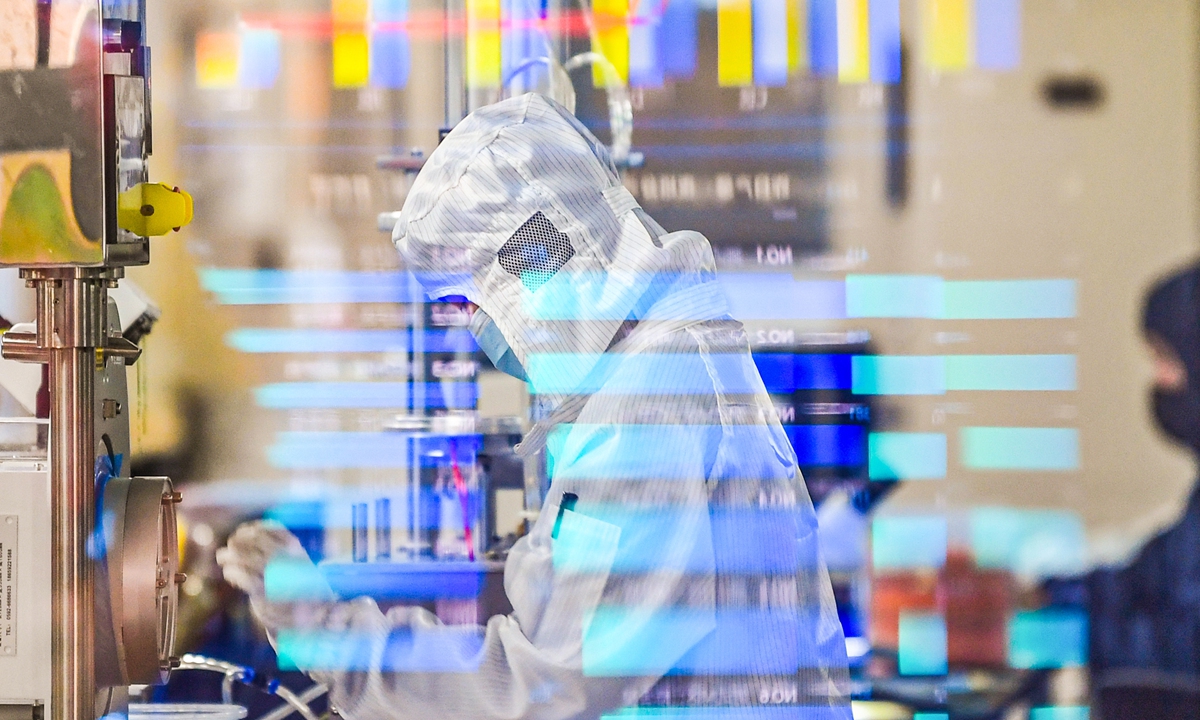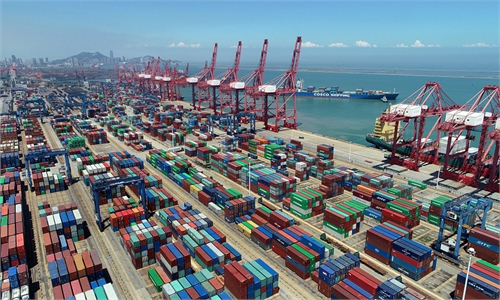
A worker tests semiconductor chips in a factory in Yancheng, East China's Jiangsu Province, on April 14, 2023. Photo: VCG
China's value-added industrial output rose 3.8 percent year-on-year in the first half, showing continued recovery momentum, according to data released by the National Bureau of Statistics (NBS).
Although external uncertainties and weak demand weighed on factory activity, the sector showed strong resilience, with certain high-tech and equipment production sectors achieving double-digit growth, which industry observers said mirrored an industrial optimization and upgrade trend. This trend will make emerging technology a pillar of economic growth this year.
The 3.8 percent growth in first-half industrial output accelerated 0.8 percentage points from the first quarter.
The output of equipment manufacturing expanded 6.5 percent year-on-year, 2.7 percentage points higher than the overall rate.
Output of solar cells, new-energy vehicles and industrial control computers and systems jumped 54.5 percent, 35 percent and 34.1 percent, respectively, in the first half.
In June, value-added industrial output rose 4.4 percent, accelerating from 3.5 percent in May.
"New industries and new products have developed quite well as China pursues an innovation-driven development strategy and promotes the wide application of various technologies, including modern information technology, artificial intelligence and big data," Fu Linghui, a NBS spokesperson, told a press briefing organized by the State Council Information Office on Monday.
During the briefing, the NBS released key first-half economic statistics, which showed the resilience of the world's second-largest economy despite multiple headwinds.
The first-half value-added of intelligent consumption device manufacturing jumped 12 percent year-on-year, Fu said.
He noted a rapid rise in the semiconductor-related industries as China speeds up inputs on "bottlenecked" technology projects.
In the first half, the industrial value-added of special equipment manufacturing for semiconductor devices mushroomed 30.9 percent.
"The production of many high-tech and emerging sectors posted double-digit growth, which is typical of industrial upgrading. It shows that China's economic structure and quality are improving and new engines of growth are afoot," Cong Yi, a professor at the Tianjin University of Finance and Economics, told the Global Times on Monday.
Analysts said that traditional manufacturing is vulnerable to external shockwaves, such as sluggish overseas demand, while the new economic drivers are more resilient against such headwinds.
"It augurs well for full-year growth, providing a robust cushion against potential softness in global trade and investment," Cong explained.
He also noted that expanded capacity in new tech sectors will lead to new investment in related industries.
He estimated that the growth of China's new economic drivers could contribute about 30 percent of full-year GDP growth.
Fu noted that investment in equipment manufacturing rose 14.4 percent year-on-year in the first half, compared with an overall manufacturing investment growth rate of 6 percent.
Investment in high-tech sectors grew 12.5 percent in the first half, compared with overall fixed-asset investment growth of 3.8 percent.



